The aim of every Amazon retailer is to appear on the first search results page with their own products. To achieve this Amazon SEO as a solution, i.e. the optimal creation of a product listing. However, the optimal design of a product listing is only half the battle, as the organic Amazon positions are also largely determined by the number of units sold. This means that the more often a product is sold, the higher the chances that your own product will be placed on the first search results page. Amazon advertising formats are undoubtedly the first choice in the online marketing mix to increase the sales figures of your own products. However, as no seller is nowadays without Amazon PPC campaigns, the effectiveness of ranking increases through e.g. Sponsored Products is also declining significantly. However, in order to place your own product listing on the first search results page, the placement of advertising campaigns, such as on Google or Facebook, is an effective means of achieving sales increases and ranking improvements. In this article, I present possible approaches to running external advertising campaigns.
External traffic campaigns - the procedure
The placement of advertising campaigns with the direct target of the product detail page
An obvious and simple way to promote your own product listings using advertising campaigns is to redirect directly to the product detail page. I will go into the use of different URL parameters (super url, filter url, affiliate link, etc.) separately at the end of this article.
Google Ads ads or Facebook ads are equipped with a direct link to the product. This is undoubtedly the easiest and fastest way to direct external traffic to your own Amazon listings, but it is also the method with the least optimization possibilities and learning effects, because neither Google nor Facebook receive notification of a successful conversion. With Google Ads, neither the keyword nor the ad responsible for the purchase can be determined. The same applies to Facebook. Neither advertising network receives any feedback about the people for whom the product is relevant. The direct redirection to the product listing ultimately makes it very difficult to track the success of external traffic campaigns. But even if they are successful, it is not possible to determine which ad, target group or keyword is responsible for the sales. In some cases, the use of affiliate links and the display of voucher codes in the ads can lead to a partial evaluation.
Advantages of directly linking the product detail page:
- Simple and quick to implement
- Easy customer understanding without being distracted by additional barriers
Disadvantage of the direct link to the product detail page:
- No feedback mechanism
- Hardly any optimization potential and learning potential
The placement of advertising campaigns with an intermediate landing page
To solve the problem of the missing feedback mechanism and the resulting lack of optimization potential, a landing page can be used as an intermediate destination. This landing page has call-to-action buttons that redirect to the Amazon product detail page. The call-to-action buttons are defined as conversions for both Google Ads and Facebook, so that each advertising platform can use a feedback mechanism to find out what actions users have taken on the landing page. For example, the "Add to Cart" event can be fired on Facebook when the call-to-action button is clicked. By integrating the events, Facebook campaigns can be optimized not only for link clicks, but also for clicks on the call-to-action buttons on the landing page.
However, the respective landing page should not only have call-to-action buttons, but should also contain a voucher code that can be redeemed when making a purchase on Amazon. By using voucher codes, it is ultimately possible to determine how many purchases were actually generated via the respective campaign.
However, this type of external traffic campaign placement only partially solves the problem of the missing feedback mechanism. The additional click on the call-to-action button means that users who are actually interested and "clicky users" are sorted out in advance. However, neither we nor the advertising platforms know which users have ultimately bought the advertised product.
This problem can theoretically be solved for us by using a variety of landing pages with unique voucher codes.
e.g.: We run Facebook ads and our campaign contains 10 ad groups. We assign a unique landing page and a unique voucher code to each ad group. With a little manual work, we can find out which voucher code was used most frequently by analyzing the orders.
The disadvantage is that it is a very cumbersome solution and that the advertising platforms do not receive any feedback about the successful order.
The placement of advertising campaigns with an intermediate landing page for lead generation
One problem that every Amazon seller faces is the lack of customer contact - customers cannot be contacted directly without Amazon's consent. To solve this dilemma, an email address can be requested in combination with external traffic campaigns and an interposed landing page. In return, customers receive a discount code that guarantees them an attractive discount at Amazon.
Requesting the email address also results in a conversion, which can be easily recorded using Facebook Pixel and Google Ads conversion tracking. In addition, requesting and generating an email address is undoubtedly a harder conversion than clicking on a call-to-action that redirects to Amazon. The entry of the email address comes very close to the final order, which can also be seen in the review of the orders and the generated email addresses. The voucher code provided allows the total number of orders to be compared with the number of email addresses.
The variant of the landing page with built-in lead generation is undoubtedly the recommended variant, as both the advertising platforms can determine a conversion and the conversion (email generation) also leads to a purchase in most cases. The conversion event can also be used to optimize the campaign with reliable data.
Advantages Landing page with built-in lead form:
- Feedback mechanism
- Optimization options
- Contact data of customers
Disadvantage of a landing page with a built-in lead form:
- Increased expenditure
- Possibly increased costs, as a newsletter tool such as Mailchimp must be used.
Example: External traffic campaigns via Facebook & Google
Possible URL parameters for the target page
In addition to the various options for directing external traffic to Amazon listings, there are also various options for the target URL. I present the use of affiliate URL links, super URLs and filter urls.
Affiliate links:
Companies and individuals who are part of the Amazon affiliate program receive a commission on the purchase price for preparing a purchase. By using affiliate links when placing external traffic campaigns, advertisers can track direct sales fairly reliably. Every product purchase made within 24 hours of clicking on the affiliate link is attributed to the affiliate partner, as long as the cookie is not overwritten.
If you are considering using affiliate links, you should familiarize yourself with the guidelines in advance. One rule states, for example, that no direct links from advertising media are permitted. This means that affiliate links may not be used directly in Google Ads or Facebook Ads. The use of an intermediate landing page, which then ultimately links to the product with an affiliate link, should not cause any problems (as of January 2019).
Super URLs:
A few years ago, super URLs were an insider tip from Amazon retailers to place products in the best possible position for certain keywords. A super URL refers to the detail page of the respective product, but contains the desired keyword in the search parameters of the URL for which the advertised product should be optimized. The super URL is intended to represent a search query from a user who ultimately clicked on the advertised product. The increased number of visitors and buyers, who were apparently reached via the "searched keyword", should result in ranking improvements for the product.
External traffic for Amazon listings: Example
In the following, I will show you step by step how I used external traffic to increase sales.
In my example, I want to use Facebook advertising to attract new customers who have to register on a landing page by email in order to receive a voucher code. The advertised product is my famous unicorn cushion.
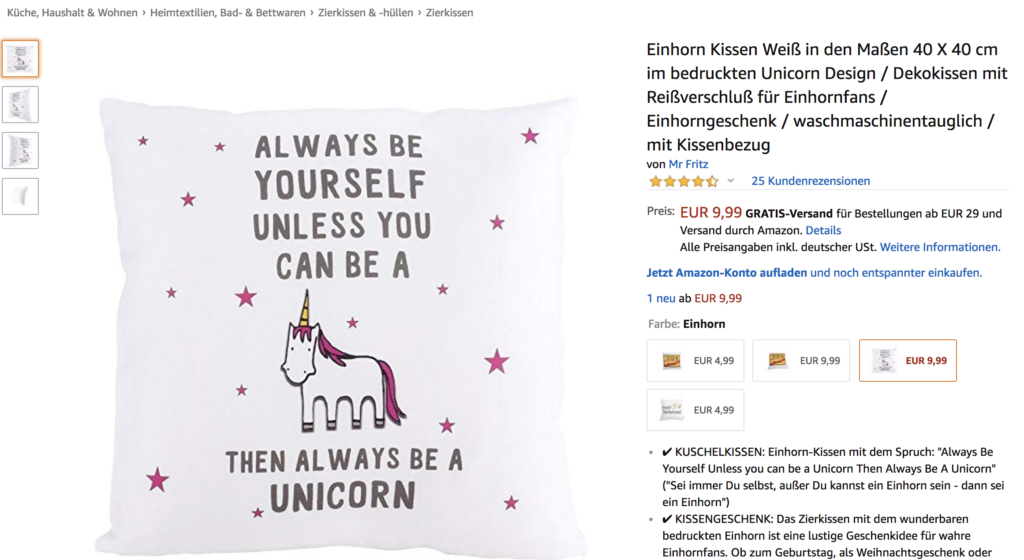
- Step: Set up a promotion on Amazon
The first step is to create the voucher codes that we provide to customers for the purchase. As I only want to award a voucher code to customers who have registered, I decide to redeem the vouchers individually.
In Seller Central, we go to Inventory → Manage Promotion → Create Discount. In my example, buyers receive a discount of 50% on the regular sales price, as you can see below.

After the promotion has been created, we now need to create discount codes. To do this, we go to Manage promotion and select the promotion we have created.
NoteA recently created promotion becomes "active" at the earliest 4 hours after the creation of the promotion. For this reason, you should select the "Pending" option in the "Promotion status" drop-down menu. This will also display the recently created promotion.

Here we now click on Show on the right and can view the promotion and create the redemption codes. To do this, we click on the menu item Manage redemption codes.

We can then determine the number of redemption codes. We can download these as a zip file once they have been created.
Step 2: Create a landing page
Now we set about creating the landing page to which we will redirect people from Facebook. There are numerous landing page tools that can be used for this. In my example, I'm using Landing Cube, which is specifically designed to create landing pages for Amazon sellers.
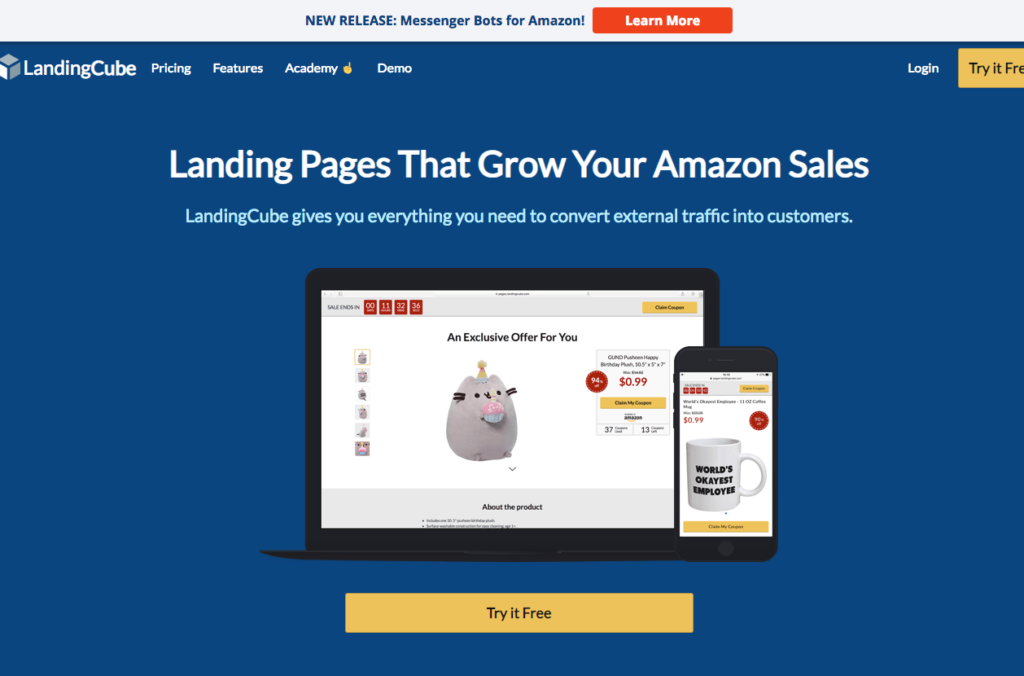
The first step is to create a new campaign at Landing-Cube. Here we have two options to choose from: to create a so-called Promo Page or a Product Page without voucher codes. I select the first option.
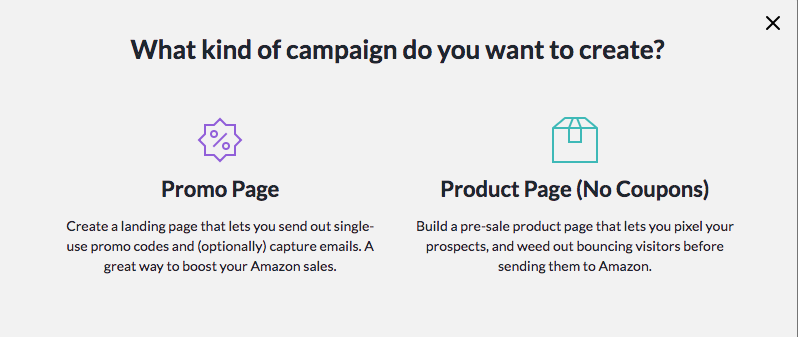
We then name the product detail page of our product that we want to advertise on Amazon. Landing Cube automatically pulls all the important product components, such as title, images, etc., and displays them on the landing page.
We then specify the amount of the discount, the regular sales price and the time frame of the promotion.
Once this information has been entered, the landing page for 90% is ready. We only need to enter the mandatory information, such as imprint, data protection, etc. and integrate the tracking and the newsletter provider used.
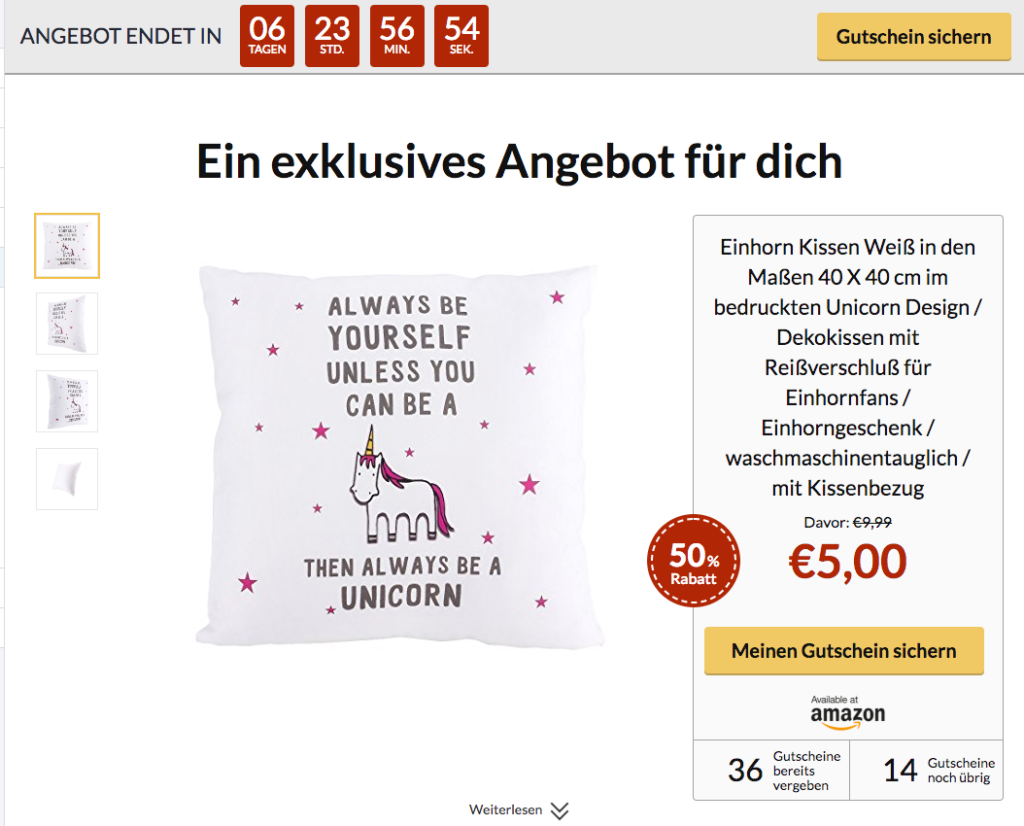
In this example, I use MailChimp to generate the email addresses and set up the double opt-in procedure. With Landing Cube, we only need to enter the MailChimp API key.
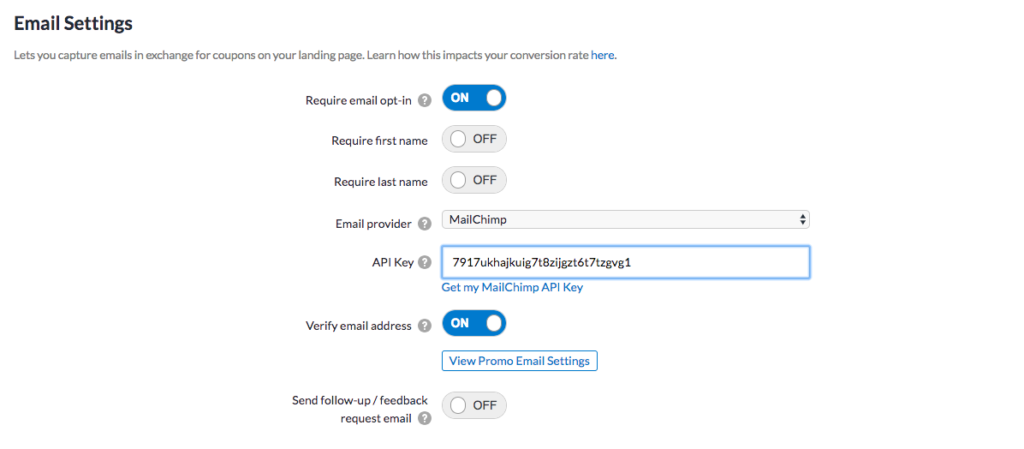
We can find the MailChimp API key in our Mailchimp account by going to Account → Extras → API Keys.
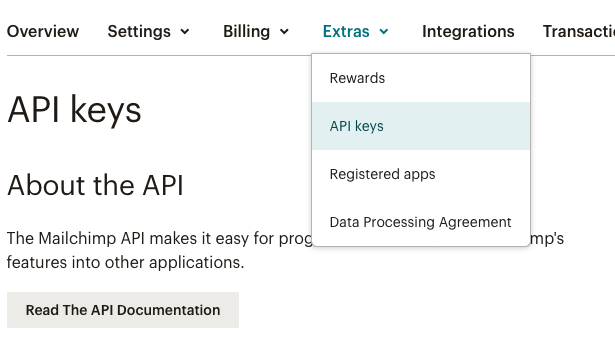
After the setup for the email address generation has been created, we now need to set up the tracking. Not only should the standard Facebook pixel be set up, but also conversion tracking using lead events.
![]()
In the last step at Landing-Cube, we only have to upload the voucher codes that we have created at Amazon.

We can then go live with the landing page and create advertising campaigns via Facebook and Google Ads.
On the topic Facebook- and Google Ads campaigns I have already written numerous articles on this topic, so I will not discuss the creation of advertising campaigns any further here.
Conclusion on the subject of external traffic:
External traffic is the decisive lever for many successful Amazon sellers to reach the first search results page. In many product categories (e.g. nutritional supplements), it is sometimes almost impossible to make it to the first search results page without external traffic campaigns. I am firmly convinced that the topic of external traffic will continue to gain in importance for Amazon sellers in the future. Those who deal with this topic at an early stage have the chance to establish themselves on the first search results page.

